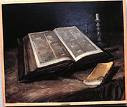

The two paintings above, one a portrait of the famous philosopher, Ludwig Wittgenstein’s sister, Margarete Stonborough-Wittgenstein and a devilish and quite alluring painting of Salome, the young woman who danced the dance of the seven veils for King Herod in exchange for the head of John the Baptist, are two of my favorite paintings by the Austrian, Gustave Klimt, (1862-1918) then founder and president of the Wiener Sezession (Vienna Secession) in 1897.
The Vienna Secession is considered by most art historians as the first “Art Noveau” movement at the turn of the century. (Some would argue this point)
Klimt was academically trained in the “realist” or “neo-classical” style thus his later work in experimentation as part of the “Vienna Secession” revealed a sophisticated technique. (The traditionalists’ of the time labeled his work “pornographic”)
The so-called mandate of the Vienna Secession, (although they claimed to have no mandate) was to provide the opportunity for new artists with varying styles to get their work shown. Preceding German Expressionism, the artist moved from “artisan” to “artist”, no more dependent on rich patronage to merely paint “portraits” of the wealthy, but brings art forward away from neo-classicism, so prevalent in pre WW 1 Austria at the time.
Pre WW1 Vienna has had a revival of fascination for academics and historians over the last twenty years. It was a the centre of “culture” in Europe, or as the journalist and radical, Karl Kraus wrote during this period, fin de siecle Vienna was the “research laboratory for world destruction”. Vienna was a hot bed of innovation: the birth place of Zionism and Nazism; Sigmund Freud developed Psychoanalysis, (Margarete shown above was one of Freud’s patients) and architecture, planted so firmly in neo-classicism or the neo-gothic style brought the art form into what is now called modernism, led by a friend of Ludwig Wittgenstein, Adolf Loos.
The reason these particular paintings have a strange attraction for me is that they reveal, although subtly, Art’s radical change just prior and after WW1. The world changed drastically after WW1, and fin de siecle Vienna was at the centre of this change in artistic sensibilities and overall “culture” across the board.
Karl Kraus’ words, that Vienna was a “research laboratory for world destruction” in retrospect were certainly prophetic.
Artists, writers, philosophers, architects, poets and scientists moved forward during a time Europe experienced two world wars which could have led to the destruction of the entire planet with the introduction of the Atomic bomb.
For me, history irrevocably shifted in fin de siecle Vienna – and the artist, Gustave Klimt was a major contributor to this radical change.


1 comment:
Interesting blog about Klimt and Vienna. Found it by accident. Wish you had pushed it further moving from Klimt to Schiele and Kokoschka, who stretched the destruction much further, never mind the shift in music from Mahler to Schoenberg. You are probably familiar with the Schorske book?
Post a Comment